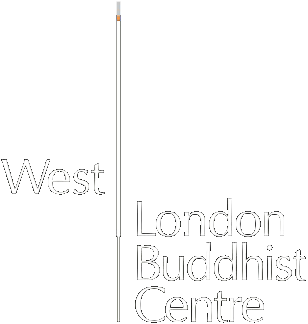Meditation Fundamentals: Clear Thinking Helps Wellness
Vajradaka is one of the most experienced meditation teachers in Triratna and is continuously developing fresh approaches to maintaining and developing a vibrant meditation practice. He is known for easy to relate to ways of teaching which come across as clear, practical and relevant.
Clear thinking helps Wellness
A fundamental premise in mindfulness is that clear progressive thinking helps wellness on every level. So here we are paying particular attention to a practical approach to using thought in a manner which supports your wellness.
Using Thought in Meditation
When we practice mindfulness meditation we are aiming to use a more effective and clearer way of using thought than usual. This might come as a surprise if you think that meditation is about not having thought. The kind of thinking which gets developed in the meditations is specifically helpful in giving you direction, recognising what’s happening and giving solutions. It stays on topic and can hold both a thread of continuity on a particular topic and it can also take in the complexity of what is happening.
Where the Thought Originates
There is a bit of an art to developing this kind of thinking in meditation. One way of approaching it is where you hear thought in your head. Rather ‘saying’ it right at the front in the temple as if you’re saying it to somebody out there in front of you it’s more like being said at the back of the skull as if you’re just saying it to yourself. This kind of thought is sometimes called subtle thought because it is quiet and suggestive even evocative. An image for this kind of thought is dropping a pebble into a pond and just waiting for the ripples to emerge. Developing this skill is worth the effort.
The Tone of Thought
Another part of the art of it is the tone. If it is a directive thought the tone is clear and gentle e.g. ‘let go of that and come back to the breath’. It even has the quality of kindness in it’s tone. If the thought is a question like ‘how do I feel?’ or ‘what is here?’ The tone conveys an openness in the question. A general guideline is that the thought is quiet, clear and gentle.
Connected Thinking
One of its most important characteristics is that the thinking process which you are using is interacting with your experience at the time. The interconnectedness between your experience of your body, emotions, mood and your mental activity is primary in mindfulness.
Questions and Directives
In relationship to your actual experience it can be diagnostic with direct questions like ‘What is happening here?’ or ‘What is needed?’ This is where the thoughts give a clear concise and accurate description of what is happening. Or, asking questions like ‘Am I here or away?’ or ‘how do I feel?’ Other useful questions are ‘what’s needed?’ ‘what would help in the situation?’ And, ‘what’s missing?’ all dropped in like a pebble into the pond for a response to emerge. With this kind of thinking we are keeping it simple rather than having long trains of thought.
Setting up for Meditation
In the set-up period before you start the actual meditation on the body and the breath you can consciously use directed thinking by giving yourself clear directives to arrive and come into experience and feel what is actually happening with your body. You then use thought to set up your intentions to be aware of the breath and the body. The way that you set up clear simple articulate directed thought in the very beginning can then continue through the meditation practice.
Meditation Affecting Life
Part of the long-term aim is that our thinking in mindfulness practice supports our ability to be well on every level in our lives.

